|
Ranking knife brands by CATRA
Quality & Service
Industrial assessment
Knife rental
Proprietary 7-Carcasses Edge
Equipment we use
Sharpening
procedures >
Guarantee
Sharpening resources
Sharpness testing
Edge stability testing
Sharpening Shop
Celebrities, press, exhibitions
Our industrial customers
Contact
Feedback
|
We can
understand you might be a bit nervous about trusting your blades to us.
See the equipment
we use, and sharpening procedures we
follow for knives like yours - we illustrated our sharpening process for most
types of blades.
We sharpen
with jigs that adjust to blade thickness and set symmetric bevels, and maintain
persistent edge angle, controlled with a laser protractor in the process of
sharpening. You can specify any edge angle for your blade.
Though a BESS calibrated edge sharpness tester is a great tool to determine the degree of sharpness, by itself it is not sufficient to verify quality of the whole edge as it samples only one point on the edge, even when you take a couple of measurements at its different portions.
At Knife Grinders we check edge by two devices used together: a BESS PT50 edge sharpness tester plus Razor-Edge edge tester.
While the BESS sharpness tester is spot sampling, the Razor-Edge edge tester checks condition along the length of the edge, and used together, they give pretty comprehensive idea of the whole edge quality, and this tandem is our QA method at the end of each sharpening session.
See to
yourself, we withhold no information about our sharpening routines.
|
Carbon steels >
Stainless mainstream (e.g. kitchen & butcher knife)
High-end
and tool steels
Ceramic
Folding
knife
Japanese single-bevel
Cleaver
Convex
blade
Concave & Recurve blade
Straight
edge, sheepsfoot
Serrated knife
Scissors
Hatchet,
tomahawk & axe
|
Carbon steels
Measure the
existing edge angle with a laser protractor, if ordered to reproduce.
(Our
default is 20 degrees included for quality knives and 24 degrees for mainstream, but you can specify any edge angle.)
Clamp in a jig
matching the blade thickness.
Set the
grinding angle using our computer software.
Shape the bevel
on an Aluminium Oxide wheel SG-250, grit 220.
With the help of computer applet calculate the Universal Support height for the next grinding wheel.
Sharpen on a 10” Japanese wheel, grit 1200 (JIS 800).
With the help of computer applet calculate the Universal Support height for the next grinding wheel.
Continue to
controlled-angle honing on a 10” Japanese wheel, grit JIS 4000
(Matsunaga) or 5000 (SJ-250).
Finish with
controlled-angle honing on a 10” paper wheel with Chromium Oxide.
Test
sharpness.
|
Measure
the existing edge angle with a laser protractor, if ordered to
reproduce.
|

|
|
Clamp in
a jig matching the blade thickness.
Read
more>>
|
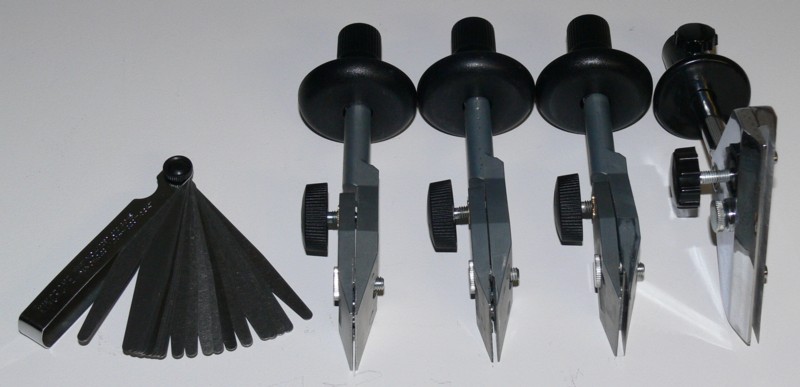
|
|
Set the
grinding angle using computer software.
Read more>>
|
Jig-Support-Wheel
relations are calculated by computer scripts, and the grinding angle is
set with 0.1 degree accuracy.

|
|
Shape the
bevel on an Aluminium Oxide wheel SG-250, grit 220.
|
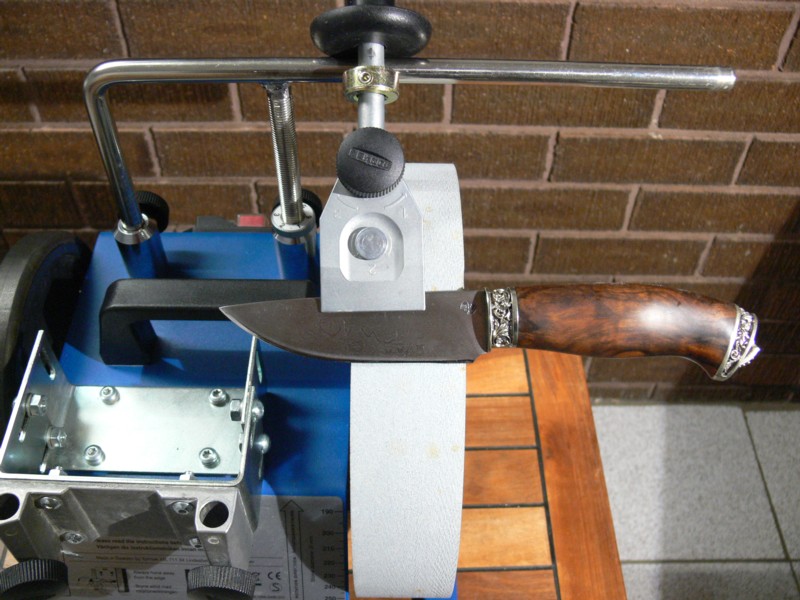
|
|
With the help of the computer applet calculate the Universal Support height for the next grinding wheel.
Sharpen
on a 10” Japanese wheel, grit 1200 (JIS 800).
|
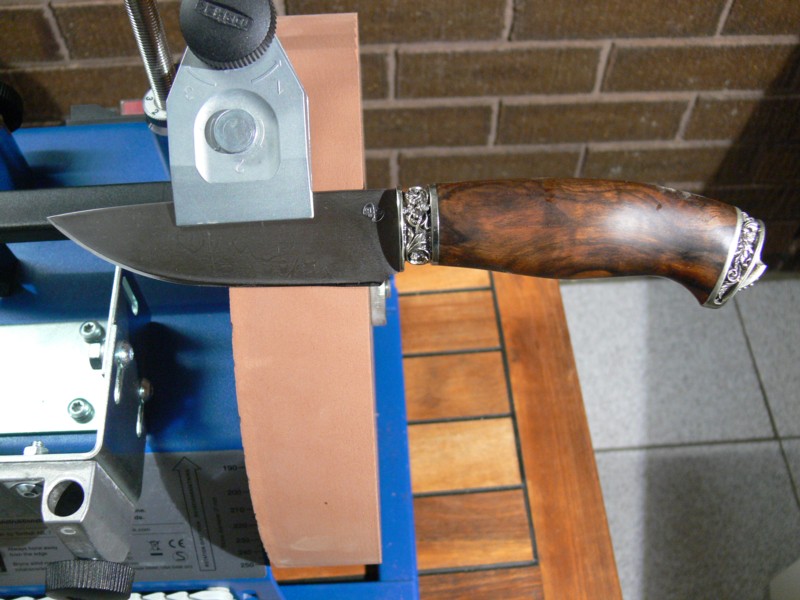
|
|
With the help of the computer applet calculate the Universal Support height for the next grinding wheel.
Continue
to controlled-angle honing on a 10” Japanese wheel, grit JIS 4000
(Matsunaga) or 5000 (SJ-250).
|

|
|
Finish
with controlled-angle honing on a 10” paper wheel with Chromium Oxide.
Read more>>
|
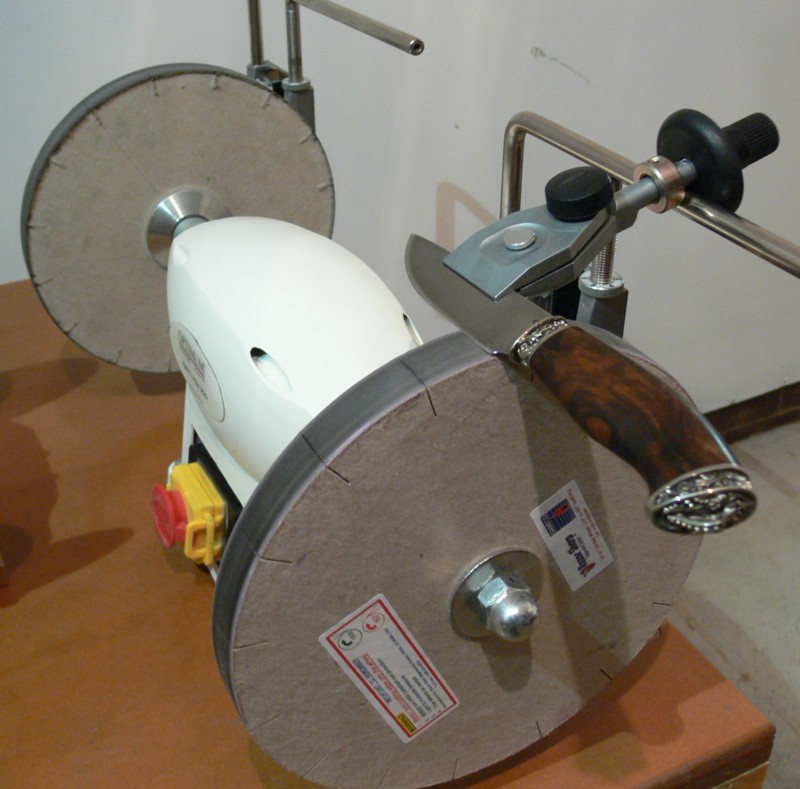
|
|
Test
sharpness.
Read
more>>
|
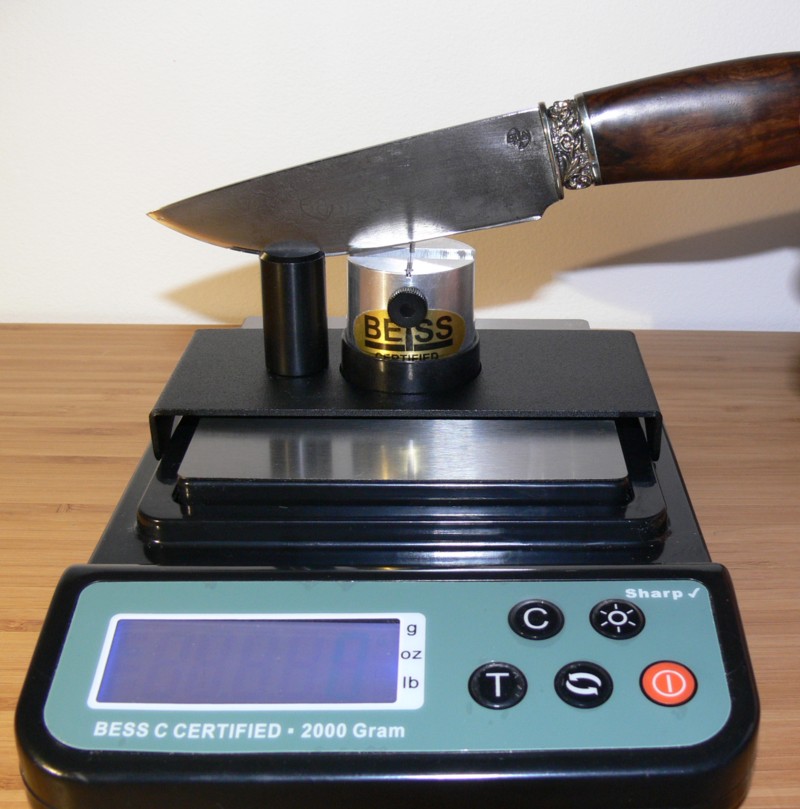
|
|
|